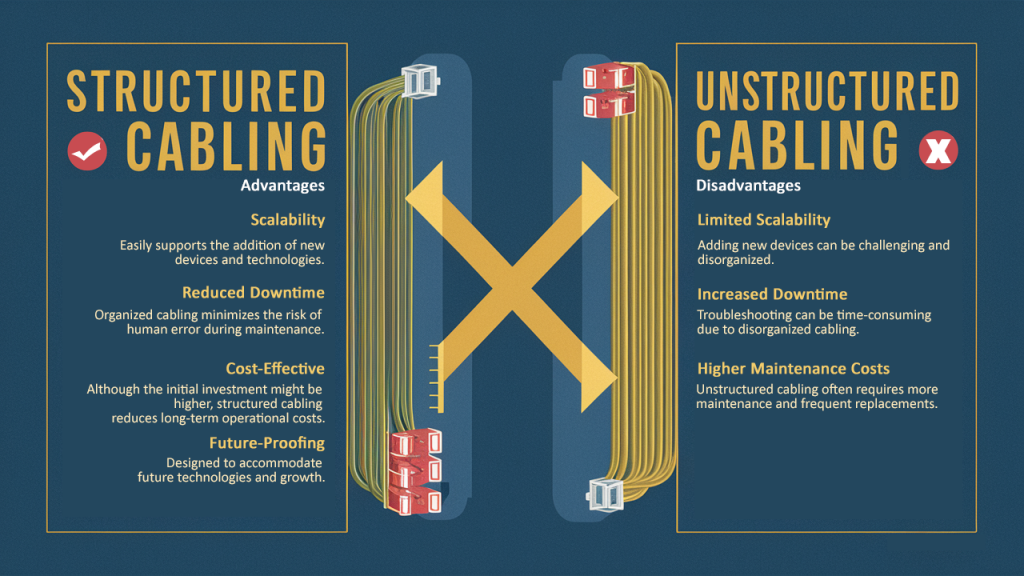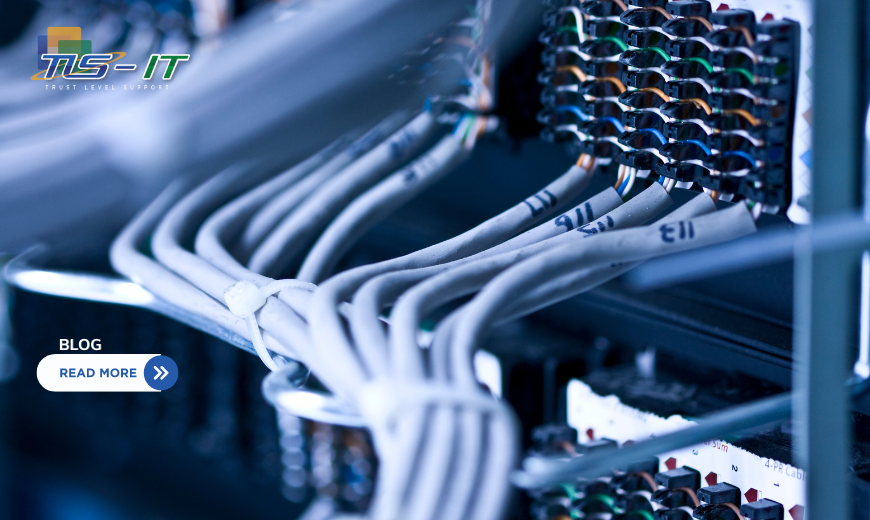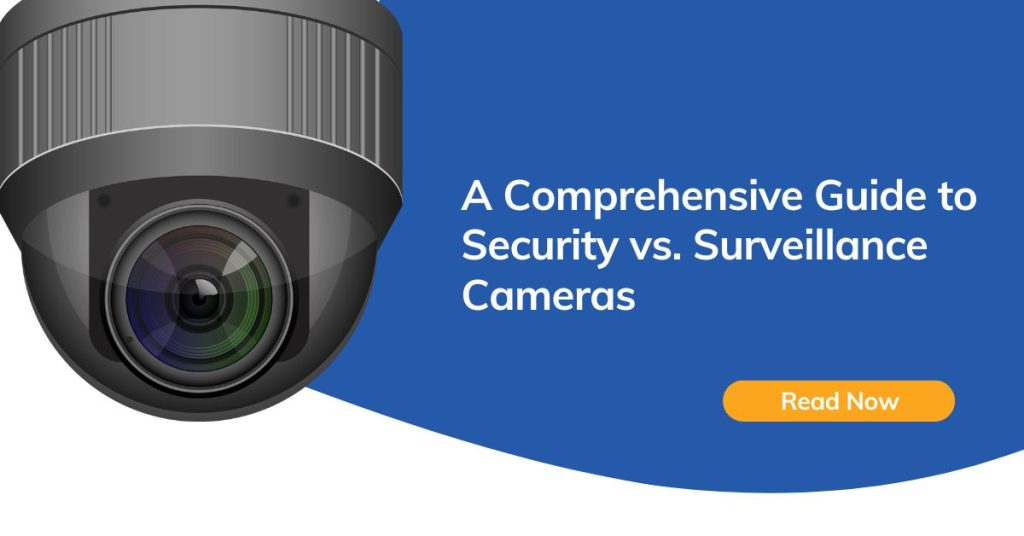The backbone of any organization’s IT infrastructure lies in its cabling system. Whether you’re setting up a new office, upgrading your network, or planning for future growth, the communication system has to be robust. It is not a choice whether you should invest in communication or not. One has to build a proper communication channels that keep connects entire team without any hassles.
And selecting between structured and unstructured cabling is critical. In this blog, we’ll explore the key differences between structured and unstructured cabling, the roles and responsibilities of structured cabling companies, the importance of a maintenance checklist, and the standard practices for structured cabling labeling.
Structured Cabling vs. Unstructured Cabling

Structured Cabling: Structured cabling refers to a standardized approach to network cabling that ensures a well-organized, systematic layout of cables and components. This method is highly scalable, supports future upgrades, and minimizes the risk of downtime. Structured cabling typically includes six key subsystems: entrance facilities, equipment rooms, backbone cabling, telecommunications rooms, horizontal cabling, and work area components.
Advantages of Structured Cabling:
- Scalability: Easily supports the addition of new devices and technologies.
- Reduced Downtime: Organized cabling minimizes the risk of human error during maintenance.
- Cost-Effective: Although the initial investment might be higher, structured cabling reduces long-term operational costs.
- Future-Proofing: Designed to accommodate future technologies and growth.
Unstructured Cabling: Unstructured cabling, often referred to as “point-to-point” cabling, lacks a defined structure or organization. It involves running cables directly from one device to another without following a standardized layout. While this might seem simpler and cheaper initially, it can lead to a chaotic mess of tangled cables, making troubleshooting and future upgrades a nightmare.
Disadvantages of Unstructured Cabling:
- Limited Scalability: Adding new devices can be challenging and disorganized.
- Increased Downtime: Troubleshooting can be time-consuming due to disorganized cabling.
- Higher Maintenance Costs: Unstructured cabling often requires more maintenance and frequent replacements.
Structured Cabling Companies: Roles and Responsibilities
When it comes to implementing a structured cabling system, partnering with a professional structured cabling company is essential. These companies play a crucial role in ensuring that your cabling infrastructure is efficient, reliable, and future-proof.
Key Roles and Responsibilities:
- Design and Planning: Structured cabling companies assess your current and future network requirements, designing a cabling system that meets your specific needs.
- Installation: Professional installation of cables, connectors, and hardware, ensuring compliance with industry standards.
- Testing and Certification: Post-installation, the cabling is tested to ensure optimal performance, and certification is provided to validate the quality of the installation.
- Maintenance and Support: Providing ongoing maintenance, including regular inspections and troubleshooting, to ensure the system continues to perform efficiently.
- Upgrades and Scalability: Advising on and implementing upgrades as your business grows, ensuring the cabling system can support new technologies.
Structured Cabling Maintenance Checklist
To ensure your structured cabling system continues to operate at peak performance, regular maintenance is crucial. Below is a checklist that structured cabling companies should follow:
- Visual Inspection: Regularly inspect cables and connectors for visible damage, wear, or corrosion.
- Label Verification: Ensure all cables are correctly labeled according to the structured cabling labelling standard.
- Cable Management: Check for proper cable management to prevent tangling, bending, or stress on the cables.
- Connectivity Testing: Periodically test connections to ensure data integrity and performance.
- Documentation Update: Keep documentation up to date, including network diagrams, labeling records, and maintenance logs.
- Environmental Monitoring: Ensure that the cabling environment is free from excessive heat, moisture, or electromagnetic interference.
- Firmware and Software Updates: Regularly update any related firmware or software that interfaces with the cabling system.
Structured Cabling Labelling Standard
A crucial aspect of maintaining an organized and efficient structured cabling system is proper labeling. Adhering to structured cabling labeling standards ensures that all components are easily identifiable, reducing the time required for troubleshooting and maintenance.
Best Practices for Structured Cabling Labelling:
- Consistent Naming Convention: Use a consistent naming convention for all labels, including rack units, patch panels, cables, and outlets.
- Clear and Legible Labels: Ensure all labels are easy to read, even in low-light conditions, and resistant to wear and tear.
- Location-Based Labels: Include information about the location of each cable, such as the room number or rack position.
- Use of Color Codes: Implement color coding for different types of cables or connections to enhance visual organization.
- Documentation: Maintain a detailed record of all labels, including their meaning and location, in a central documentation system.
Conclusion
Choosing between structured and unstructured cabling is more than just a technical decision—it’s a strategic one that impacts the efficiency, scalability, and cost-effectiveness of your IT infrastructure. Structured cabling provides numerous long-term benefits, including reduced downtime, easier maintenance, and future-proofing your network. By partnering with a professional structured cabling company, adhering to a regular maintenance checklist, and following industry labeling standards, you can ensure that your cabling system remains reliable and efficient, supporting your business’s growth in the years to come.
Implementing and maintaining a robust structured cabling system is an investment in your business’s future, and in a dynamic market like Dubai, it’s an essential component of staying competitive. If you’re looking for expert advice, design, and installation services for structured cabling, TLS-IT Solutions is here to help. Visit us at www.tls-it.com to learn more about how we can support your business’s IT infrastructure needs.




